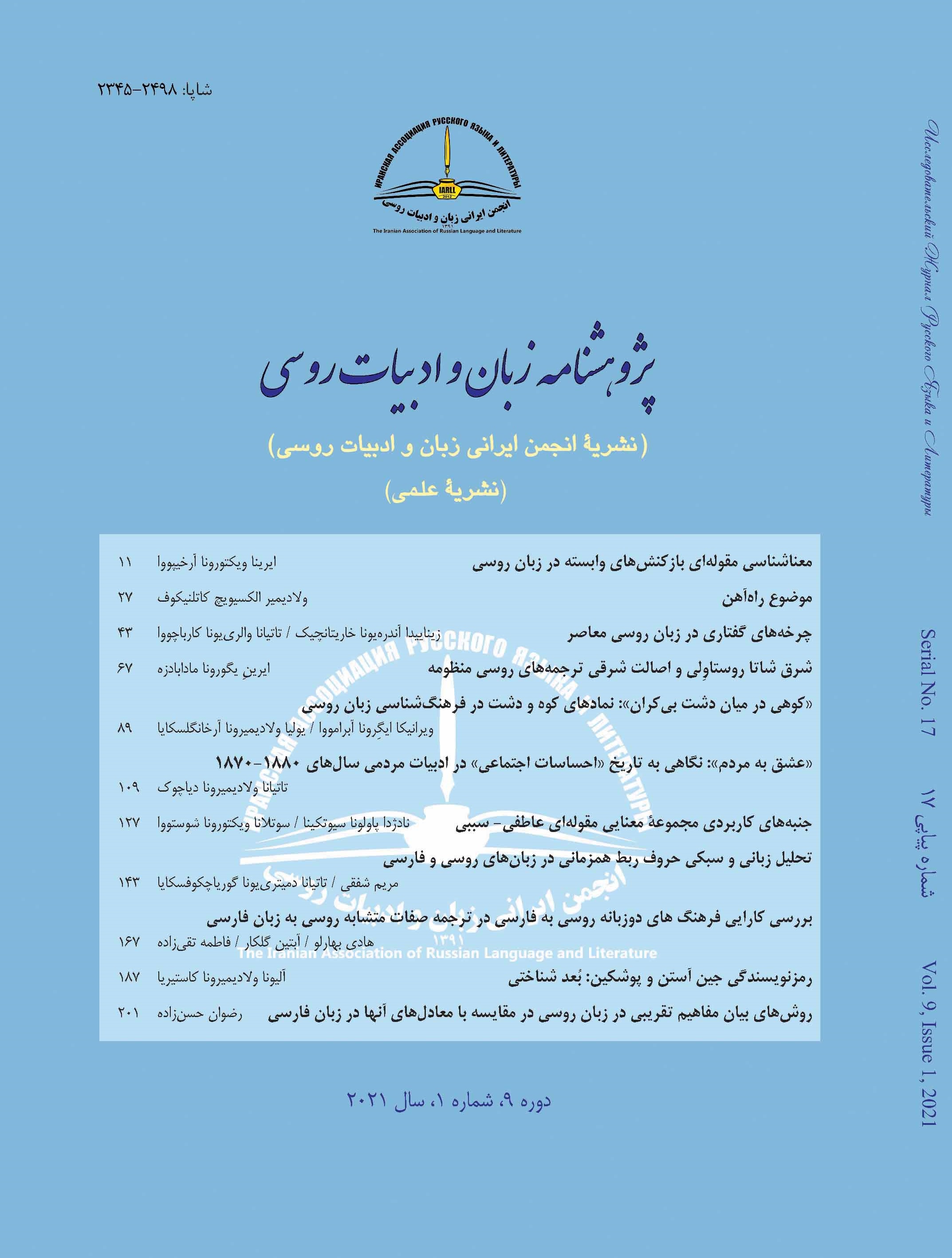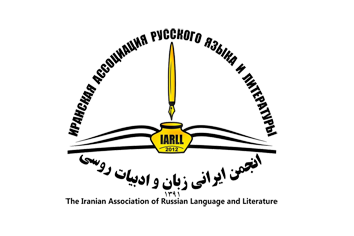Lexical Cycles in Modern Russian
DOI:
https://doi.org/10.52547/iarll.17.43Keywords:
Temporal Lexical Cycle, Sequence, Recurrence, Salience, Frequency.Abstract
The article is focused on temporal lexical cycles in Russian – groups of words united by semantic relations of sequence and recurrence. Semantic and pragmatic properties of names-constituents of the day (утро-день-вечер-ночь), week (понедельник-вторник-среда-четверг-пятница-суббота-воскресенье), season (весна-лето-осень-зима) and year (январь-февраль-март-апрель-май-июнь-июль-авгукст-сентябрь-октябрь-ноябрь-декабрь) lexical cycles in Russian which become evident in the course of lexicographic, contextual, derivational and phraseological analysis, testify to the heterogeneity of the cyclical structures (e.g. natural, event-based and conventional ones; terminological/non-terminological: with rigid/non-rigid boundaries, etc.). Most significant is the salience of some member elements within the cycle (ночь ‘night’ in the day cycle, лето ‘summer’, весна ‘spring’ in the seasonal cycle, etc.). Knowledge of ontological features of the time period named, of activity related to it and subjective-evaluative associations’ language users may have on the basis of this information function as the foundation of the salience of cyclical members.
References
- Большой толковый словарь русского языка (2000). Сост. и гл. ред. С. А. Кузнецов. –СПб.: Норинт.
- Кошелев А. Д. (2015). Когнитивный анализ общечеловеческих концептов. – М.: Рукописные памятники Древней Руси.
- Львов М. Р. (1984). Словарь антонимов русского языка: Более 2000 антонимических пар. – Под ред. Л. А. Новикова. – 2-е изд., испр. и доп. –М.: Рус. яз.
- Национальный корпус русского языка [Электронный ресурс]. – Режим доступа: htpp://www. ruscorpora.ru. – Дата доступа: 15.01.2020.
- Никитин М. В. (2007). Курс лингвистической семантики. – 2-е изд. доп. и испр. –СПб.: Изд-во РГПУ им. А. И. Герцена.
- Толстая С.М.(2005). Полесский народный календарь. –М.: Индрик,
- Харитончик З. А. (2015). Деривационная активность конституентов лексических циклических структур, В поисках сущности имен. Избранное: сб. науч. ст. – Минск: МГЛУ, 143–150.
- Coseriu E. (1981). Principios de semántica estructural Versíon esp. de M. Martínez Hernández revisada por el autor – 2a ed. – Madrid: Gredos.
- Cruse D. A. (1986). Lexical semantics (Cambridge textbooks in linguistics) – New York: Cambridge University Press.
- Cruse D. A. (2000). Meaning in Language. An Introduction to Semantics and Pragmatics. – New York: Oxford University Press.
- Jackendoff R. (2012). A user’s guide to thought and meaning. – New York: Oxford University Press.
- Leech G. N. (1970). Towards a Semantic Description of English. – Bloomington; London: Indiana University Press.
- Leech G. N. (1974). Semantics. – London: Penguin.
- Lyons J. (1987). Semantics. – 7th ed. Cambridge University Press.
- Miller G. A. (1976). Language and perception / G. A. Miller, P. N. Johnson-Laird. – Cambridge, Massachusetts: Belknap Press of Harvard University Press.
Bibliography
- Bol'shoj tolkovyj slovar' russkogo jazyka (2000). Sost. i gl. red. S. A. Kuznecov. –SPb.: Norint.
- Koshelev A. D. (2015). Kognitivnyj analiz obshhechelovecheskih konceptov. – M.: Rukopisnye pamjatniki Drevnej Rusi.
- L'vov M. R. (1984). Slovar' antonimov russkogo jazyka: Bolee 2000 antonimicheskih par. – Pod red. L. A. Novikova. – 2-e izd., ispr. i dop. –M.: Rus. jaz.
- Nacional'nyj korpus russkogo jazyka [Jelektronnyj resurs]. – Rezhim dostupa: htpp://www. ruscorpora.ru. – Data dostupa: 15.01.2020.
- Nikitin M. V. (2007). Kurs lingvisticheskoj semantiki. – 2-e izd. dop. i ispr. –SPb.: Izd-vo RGPU im. A. I. Gercena.
- Tolstaja S.M.(2005). Polesskij narodnyj kalendar'. –M.: Indrik,
- Haritonchik Z. A. (2015). Derivacionnaja aktivnost' konstituentov leksicheskih ciklicheskih struktur, V poiskah sushhnosti imen. Izbrannoe: sb. nauch. st. – Minsk: MGLU, 143–150.
- Coseriu E. (1981). Principios de semántica estructural Versíon esp. de M. Martínez Hernández revisada por el autor – 2a ed. – Madrid: Gredos.
- Cruse D. A. (1986). Lexical semantics (Cambridge textbooks in linguistics) – New York: Cambridge University Press.
- Cruse D. A. (2000). Meaning in Language. An Introduction to Semantics and Pragmatics. – New York: Oxford University Press.
- Jackendoff R. (2012). A user’s guide to thought and meaning. – New York: Oxford University Press.
- Leech G. N. (1970). Towards a Semantic Description of English. – Bloomington; London: Indiana University Press.
- Leech G. N. (1974). Semantics. – London: Penguin.
- Lyons J. (1987). Semantics. – 7th ed. Cambridge University Press.
- Miller G. A. (1976). Language and perception / G. A. Miller, P. N. Johnson-Laird. – Cambridge, Massachusetts: Belknap Press of Harvard University Press.
Downloads
Published
How to Cite
Issue
Section
License
Copyright (c) 2021 Issledovatel'skiy Zhurnal Russkogo Yazyka i Literatury

This work is licensed under a Creative Commons Attribution 4.0 International License.
![]()
"Creative Commons Attribution 4.0 International (CC-BY 4.0)"


